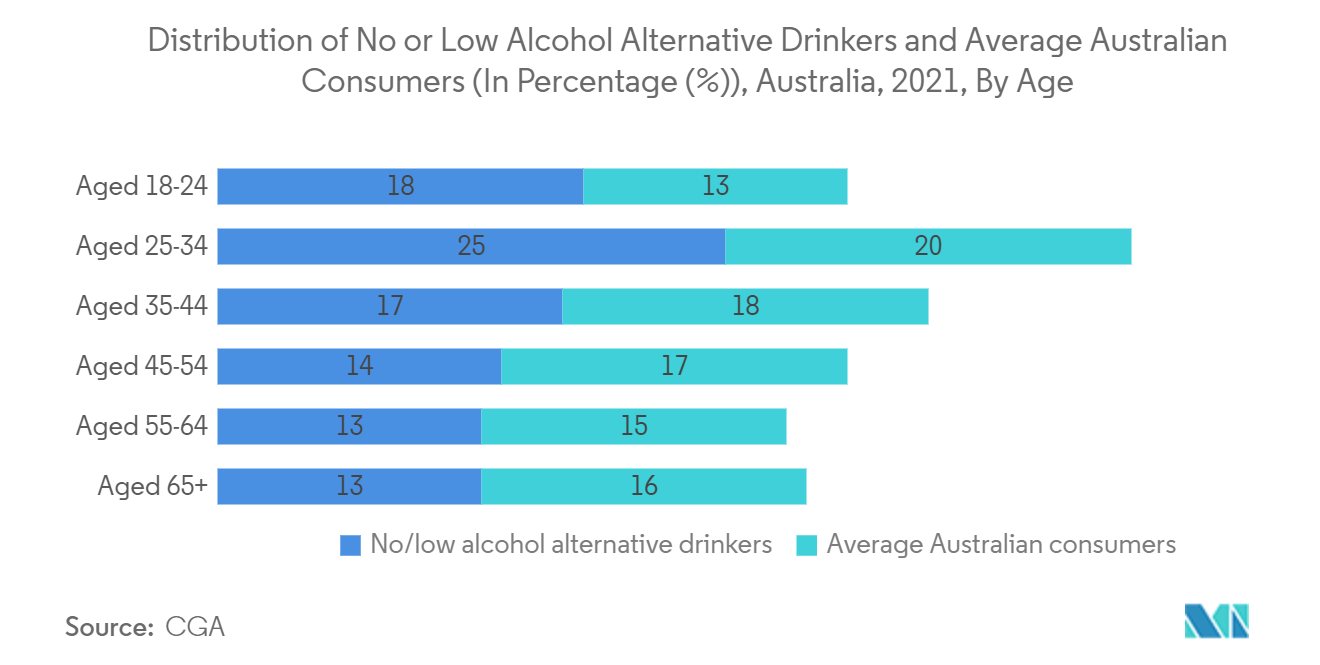Market Trends of Australia Metal Packaging Industry
This section covers the major market trends shaping the Australia Metal Packaging Market according to our research experts:
Aluminum is Expected to Hold a Significant Share
- Cans made of aluminum are gaining significant growth in the food and beverage industry as the demand for canned food is growing. Also, canned food has a natural shelf life of up to three years with no need for chemical additives for preservation. The canning process locks in flavor and nutrients. Canned food's vitamin content has often been proven equal to that of fresh. This allows the producers to produce canned foods to serve non-seasonal food to their customers.
- Also, growing environmental concerns in the region have increased awareness about the type of packaging materials utilized. High energy consumption of packaging manufacturing is one of the factors pushing recycling. Diminishing natural reserves, global warming, and the impact of plastics on the environment are key trends influencing consumer demand.
- Additionally, the growing demand for standard cocktails and mocktails and the willingness to spend on alcoholic beverages among Australian consumers are expected to support the market's growth. Also, Australian drinkers are expected to pay less for no- or low-alcohol alternatives than standard serves across all drink categories. This will promote growth for metal caps and closure in the projected time frame.
- Growing sustainability and environmental concerns and the ban on single-use plastics commenced in 2022. Banning plastic straws, stirrers, cutlery, plates, and bowls has boosted the demand for metal and paper packaging. This is evident from the growing consumption of primary aluminum in Australia. Also, the immediate aluminum consumption reached 257.3 thousand metric tons in 2021, a significant increase from 179.5 thousand metric tons in 2019, according to the World Bureau of Metal Statistics.

Increasing Demand for Metal Packaging by the End-User Vertical
- From production to transport and storage, metal packaging offers greater protection, value, and performance throughout the supply chain. Australia's expanding distribution network for canned food items is expected to contribute to market growth. Dedicated niche online and offline shops for specialty food products are helping to build a significant demand for canned produce. The longevity of canned fruits and vegetables is an important factor supporting the canned vegetable market.
- Cans made of aluminum are gaining substantial growth in the food and beverage industry as the demand for canned food is growing. Also, canned food has a natural shelf life of up to three years with no need for chemical additives for preservation. The canning process locks in flavor and nutrients. Canned food's vitamin content has often been proven equal to that of fresh. This allows the producers to produce canned foods to serve non-seasonal food to their customers.
- Also, growing environmental concerns in the region have increased awareness about the type of packaging materials utilized. High energy consumption of packaging manufacturing is one of the factors pushing recycling. Diminishing natural reserves, global warming, and the impact of plastics on the environment are key trends influencing consumer demand.
- Additionally, the growing demand for standard cocktails and mocktails and the willingness to spend on alcoholic beverages among Australian consumers are expected to support the market's growth. Also, Australian drinkers are expected to pay less for no- or low-alcohol alternatives than standard serves across all drink categories. This will promote growth for metal caps and closure in the projected time frame.
- Growing sustainability and environmental concerns and the ban on single-use plastics commenced in 2022. Banning plastic straws, stirrers, cutlery, plates, and bowls has boosted the demand for metal and paper packaging. This is evident from the growing consumption of primary aluminum in Australia. Also, the immediate aluminum consumption reached 257.3 thousand metric tons in 2021, a significant increase from 179.5 thousand metric tons in 2019, according to the World Bureau of Metal Statistics.
- Demand from the food and beverage market has fueled the packaging industry's expansion. The need for canned food and beverages is driven by a need for more time and smaller family sizes, which forces the metal packaging market forward. Advances in packaging technology have also aided in the development of metal cans with increased functional and storage qualities, which has fueled market expansion in the beverages end-use sector.
- Metal can finds its uses in both alcoholic and non-alcoholic beverages. However, the market's growth is expected to be hindered by factors such as environment-related issues pertaining to steel mining, increased material cost, and a shortage of skilled workers.
- Additionally, according to CGA, in 2021, about 43 % of no/low alcohol alternative drinkers in Australia were between 18 and 34. In comparison, the 18-34-year-old average Australian consumers accounted for 36 % of surveyed adults in Australia. This is anticipated to boost the market for metal packaging in the forecast timeframe.

